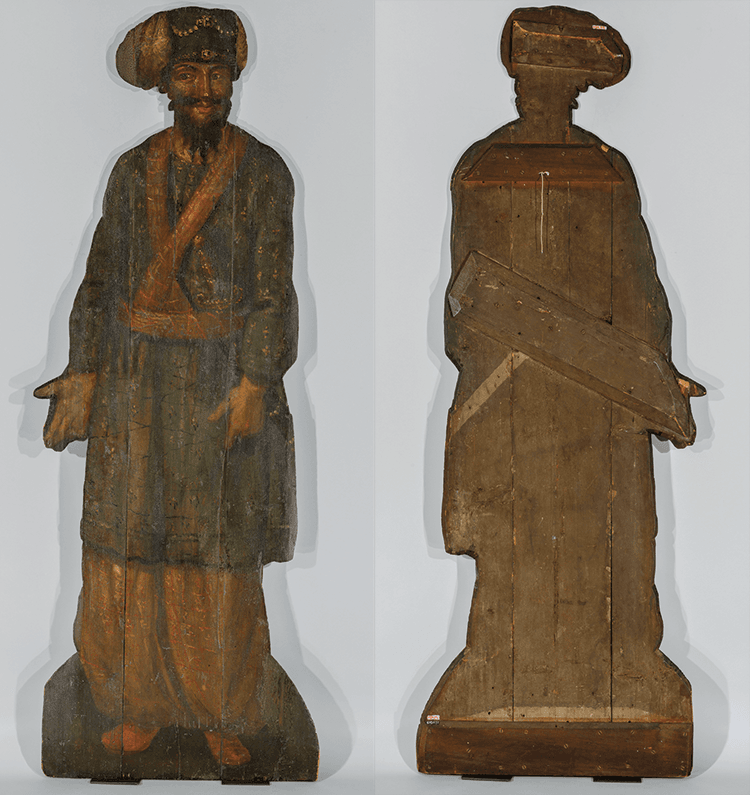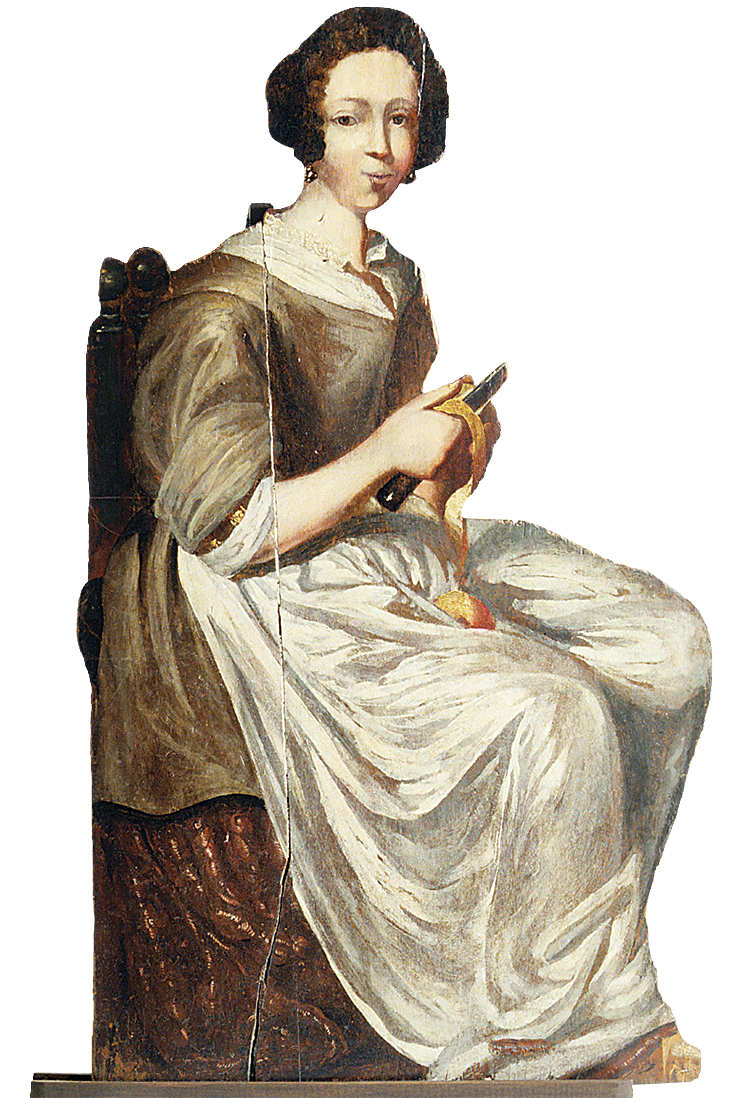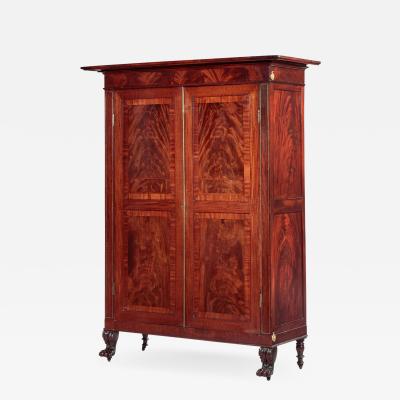Folk Art: Silent Companions

- Fig. 1: Dummy board of a Turkish figure was previously owned by the Wister family. It is in the collection of the Germantown Historical Society, located near the Wister’s country estate, Grumblethorpe, Pennsylvania (GHS 1051). Images showing recto (a) and verso (b) before conservation. Photography by the author and Jim Schneck.
It is 1777 and the British Army has just occupied Philadelphia. You are visiting friends outside of the city. You arrive in the black of night. The front door opens and you are expecting to enter a warm home of like-minded patriots. Instead, you see a figure in a brightly colored red uniform casting an ominous shadow in the candle-lit entrance. You turn and run, thinking the Redcoats have reached this safe haven. Only later do you discover you were surprised by a painted wooden object. This is a trick that Sally Wister (1761–1804), daughter of John Wister, a prosperous wine merchant in Philadelphia, played on a guest and recorded in her diary.1
The wooden objects, known as “silent companions,” although rare today, originated in seventeenth-century Europe and were fairly common in eighteenth-century colonial American domestic interiors.2 Dummy boards, the nineteenth-century term for silent companions, were painted in a trompe l’oeil manner with beveled edges to cast a lifelike shadow. Though their full range of uses remains undocumented, they may have served multiple purposes for playful entertainment (like Sally’s act of deceit) or decorating a lonely corridor. Dummy boards were often displayed attached to a chair rail or were freestanding with a discreet triangular support attached to the back.
At the Winterthur Paintings Studio, we are currently conserving a silent companion owned, as coincidence would have it, by the Wister family3 (Fig. 1). The dummy board depicts a figure in Turkish costume, which in itself is unusual. More typical examples of dummy boards depict maids, gardeners, soldiers, children, household and farm animals. A dummy board in Winterthur’s collection (Fig. 2) is of a woman peeling apples, imagery common not only among dummy boards, but also in Dutch genre scenes.
Although, as noted, scholarship is lacking about the creators and use of dummy boards and their social significance, they have served as primary sources for other areas of research, such as historic costumes (especially military uniforms). Conservation of the Turkish figure was requested because the costume was not easily interpreted, given the previous condition of the object. The primary issue was the severely degraded, discolored, and disfiguring varnish coatings. The conservation treatment has focused on the removal and reduction of these coatings using solvent gel cleaning systems. The gelled systems hold the solvent at the surface to reduce the risk of its reaching the original painted surface.
The areas that have been cleaned (Fig. 3) now reveal beautiful details previously obscured: the sword hilt decorated with jewels and the robe and pants embellished with a flower and stripe pattern. Shadows have also been revealed and the figure now appears even more three-dimensional. The rest of the treatment will include minimal loss compensation and inpainting to maintain a folk-art aesthetic. A new coating with a varnish resistant to yellowing and oxidation will be applied at the end of the treatment. When complete, the conserved figure will be on view at the Germantown Historical Society.
Emily Wroczynski is a graduate fellow in paintings conservation at Winterthur Museum and the University of Delaware.
This article was originally published in the Anniversary 2015 issue of Antiques & Fine Art magazine, a digitized version of which is available on afamag.com. Antiques & Fine Art, AFAmag, AFAnews, and AFA Publishing are affiliated with InCollect.com.
2. Very little is known about the craftsmen who produced dummy boards. The earliest dated dummy board is from the middle of the seventeenth century and was painted by a Dutch easel painter, Cornelis Bisschop. Their use in America continued into the nineteenth century. Modern incarnations of dummy boards include cardboard cutouts of celebrities and card and menu holders in front of restaurants.
3. The wooden soldier that caused a fright is owned by and on display at the Philadelphia History Museum at the Atwater Kent (HSP1931.5).


































